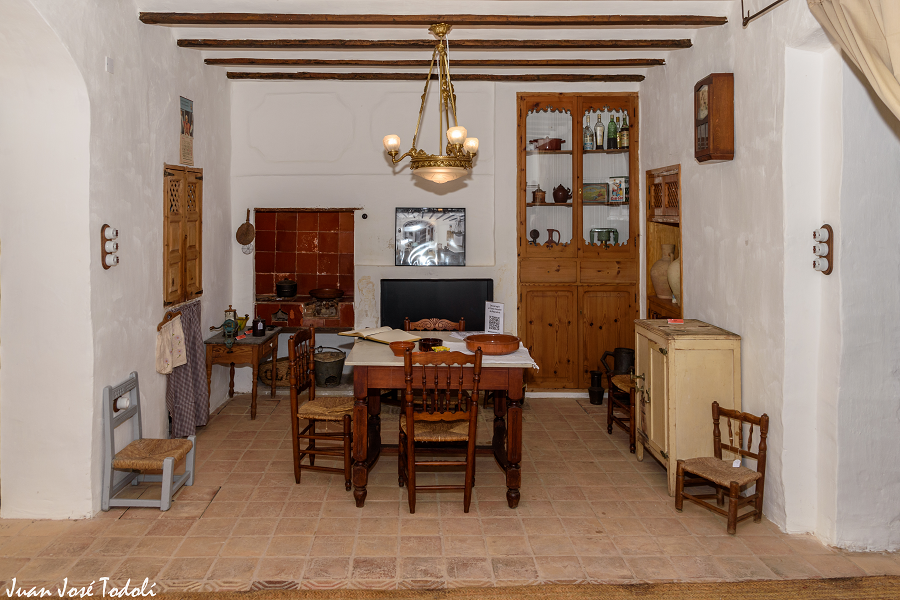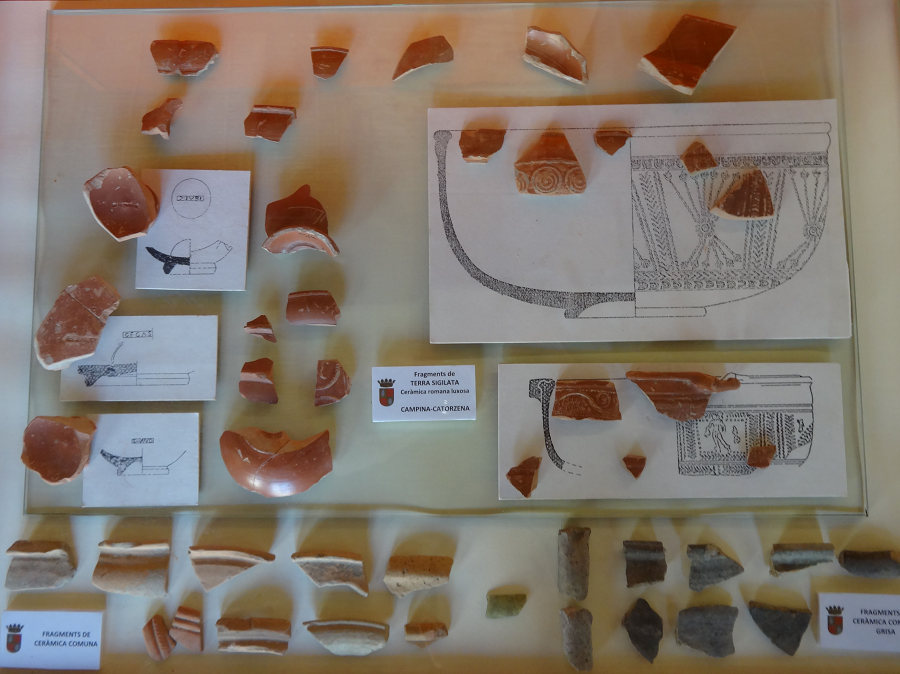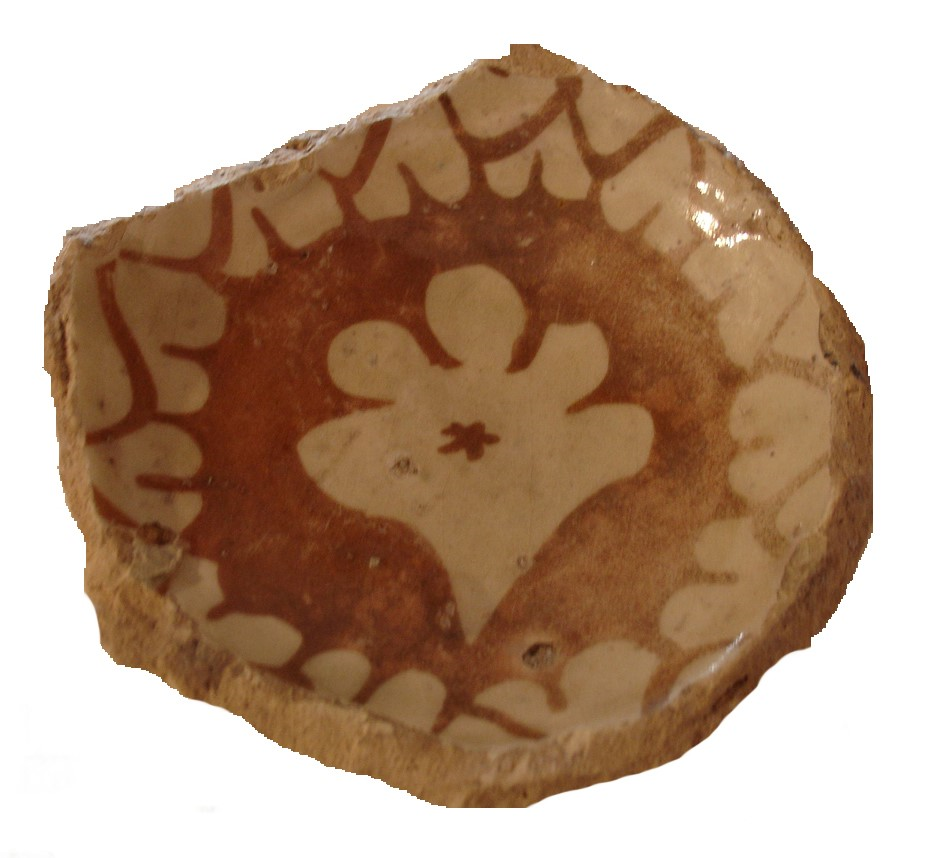 Town Hall
Town Hall Sants Joans parish church
Sants Joans parish church Calvary-Chapel
Calvary-Chapel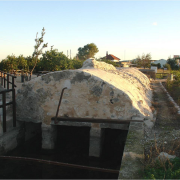 The Architecture of Water
The Architecture of Water Àngel Domínguez pottery
Àngel Domínguez pottery Archaeological vestiges
Archaeological vestiges
Town Hall:
The Town Hall of Potries is a splendid example of 17th century stately architecture in our rural area. This building is located at 28, Boamit Street. The house, preserved until today, was built between the last years of the 16th century and the first decade of the 17th. We know that in 1611 it was intended to revoke the establishments made on the house in favor of Pere de Borja i Centelles, second son of Carles de Borja, V Duke of Gandia and Magdalena Centelles, Countess of Oliva.

In fact, a document dated in 1611 mentions Pere de Borja i Centelles, governor of Gandia, as the owner in Potries of a “large and new house, with many rooms, as good as the best among all his properties”. Pere de Borja i Centelles was the second son of the marriage between the Duke of Gandia, Carlos de Borja, and the Countess of Oliva, Magdalena Centelles. The marriage between Carles and Magdalena unified two very important manorial possessions. It was in 1595 that the Borjas, by marriage, incorporated into their domains those of the county of Oliva. We believe that the newly house from the document is the magnificent building of the current Potries Town Hall, and it is clear that it was built between the years 1595 and 1611, most likely for merely economic reasons, related to the control and administration of a set of properties that, since then, the Borjas had to administer.
The Town Hall preserves the original structure as well as some unique elements: the wrought iron fences on the facade, the beautiful polychrome ceramic floorings, similar to those in the Ducal Palace in Gandia or the Saló de Corts of the Palau de la Generalitat, in València.
Some of the late Renaissance decorative elements and the quality of certain materials used in the construction link this building to the leading and wealthy classes of the time.
The masonry is basically mixed mortar and brick, except for the base of the main facade’s corner, which is made of ashlars. It has a U-shaped floor plan, composed of a main body with ground floor, first floor, a loft and an arabic-tiled gable roof; and four more spaces articulated to the main body, two at each side of the building.
Two of these spaces are located between the ground floor and the first floor, as a mezzanine floor, with direct access from the wide vestibule through elegant stairs decorated with mocadoret tiles. The other two spaces are placed between the first floor and the loft. This layout of the building’s dependencies corresponds to the gaps in the main facade. It forms a rectangular backyard, flanked by the two adjacent bodies with ground floor and first floor. It has also two spaces attached to the rear facade, with pent roofs towards the interior, where the economic annexes like stables, hayloft and kitchen were placed.

In the first photograph we see the main entrance to the Town Hall with the original wooden bigam, in the second photograph the mayor’s office, with the polychrome ceramic pavement.

At the end of the 19th century the municipal corporation, due to the demolition of the council’s old building in the church square, acquired this property from Domingo Llopis, a rich owner and industrialist dedicated to the silk business, and turned it into the headquarters of the Town Council. They installed the public clock and built in the schools, the teachers’ dormitory and a small prison. A careful restoration in the early 80s made it possible to conserve this building, as well as its unique elements.
Sants Joans parish church:
The parish of Potries was established as an independent entity in the last quarter of the 16th century, after the remodelling of the Valencian diocese carried out by Archbishop Sant Joan de Ribera in 1574. Prior to that it was a morisco rectory pertaining to Oliva. This church has the characteristics of the religious architecture of the time, influenced mainly by the Jesuitical premises.
It has a Latin cross plan inscribed in a rectangle, a central nave covered with a barrel vault and transverse ribs, side chapels, a non-emerging crossing and a bell tower occupying the space of the first chapel on the right side. The interiors are sober, they articulate the elevation by means of composed pilasters over pedestals, transverse arches and barrel vaults.
We know there have been, at least, two interventions that have extended the church on its western side. The first one, carried out between the end of the 17th century and the beginning of the 18th, which enlarged the lateral chapels and covered them with a dome, and shortened its facade endowing it with a more mixtilinear profile on the top, both works in accordance with the typical baroque style of the time.

The second one, executed during the first quarter of the 19th century, resulted in the construction of a new chapel, dedicated to Sant Blai, beside the crossing. It features a Greek cross plan covered with a dome over pendentives and a lantern. Its architectural style reminds us of the classicist current dictated from the Sant Carles Academy in València.

The stonework of the church is mainly of rubblework and lime mortar, though we find brickwork too; as for the stone ashlars, we can find them in the sober facade, tower corners and the Sant Blai chapel, but especially in the upper bell tower, built exclusively with this local material. This construction element approaches us stylistically to the period when the parish was erected, being an example of the customary herrerian style in our region. The cover is a gable roof with arabic tiles.

Image of Sants Joans Church and the bell tower.
The church retains the relic of Sant Blai (16th century, patron saint of the town), and a copy of the polychrome baroque carving of the Christ of Agony. These elements of our cultural heritage help to keep alive important religious and festive traditions in our town; such as the traditional processions of la Baixà (the Descent) and la Pujà (the Ascent) in our town’s major festivities. Not many festivities have such a popular rooting and support as the well-known Porrat de Sant Blai in Potries. Year after year, uninterruptedly for many centuries, thousands of visitors come to our town, to fulfil the religious ritual of passing the saint’s relic by the throat to heal and prevent diseases.
Calvary-Chapel

1.- ARCHITECTURAL SITE DESCRIPTION:
The chapel is located at the top of a small hill, 137 meters high, south east of Potries. The Potries Subsidiary Legislation designates its surroundings as protected areas, due to their environmental and scenic value.
A steep path flanked by cypresses shapes the Calvary, and allows the ascension from town to the chapel. It is a cobbled and stepped path with a very accentuated slope. In the upper part, the path is forked and curved until reaching a semicircular square located in front of the chapel building. This square is all surrounded by a masonry railing, with limestone slabs on its top, and it forms a wonderful balcony over the surrounding fields with magnificent views.
It was built by the townspeople under the direction of architect Carlos Spain in the mid-19th century, although there had been a small construction previously, housing the image of Christ since 1799. That is what Fernando Garrigós, a Piarist and pedagogue from Potries, tells us in a booklet published in the last century, entitled: “Septenary annals and joys to Christ Our Lord crucified in the miraculous image venerated in the Calvary chapel in Potries”.
 The chapel of the Santíssim Crist de l’Agonia.
The chapel of the Santíssim Crist de l’Agonia.
In the chapel we can see, on a small scale, the neoclassical architectural models that extended during the first half of the 19th century following the premises dictated by the Sant Carles Academy in València. The works began in 1854, year in which, according to popular legend, Christ saved the town from a cholera outbreak, and they were extended beyond 1861, since in this year the town council decided to transfer the Christ image to the Sants Joans church in order to complete the chapel. On the facade there is an inscription of 1865, as the possible year of the chapel’s completion.
The building’s floor plan is a 15 meter squared panel, with the proper temple occupying the central part, and two longitudinal sections attached to the sides of the temple. The temple plan presents a Greek cross arrangement inscribed in a rectangle, a sanctum, and an atrium or foyer in the front. Externally, the chapel has a compact aspect, smoothed out by the games that architectural volumes create outside, corresponding to the original distribution of inner spaces.
The facade shows a sober and elegant neoclassical conception, where the symmetrical layout of external openings alleviates its robustness and creates a delicate set of solids and openings, lights and shadows. The naves are covered with barrel vaults and transverse ribs, and the crossing has a cupola over an octagonal drum with pendentives.
Architectural elements dominate over decoration. The paintings inside the chapel are the work of the painter Luís Téllez-Girón i Belloch. It is also noticeable the central niche in the main altar, which houses the image of the Crist de l’Agonia, an 18th century polychrome carving.
THE CALVARY:

The Calvary ascent towards Potries chapel.
In the 15th century, the first Calvaries with their corresponding Stations of the Cross started to emerge in Europe, although in our land they were mainly developed in the 18th century. These Calvaries reproduced at local level the path Jesus walked during his passion, from Pilate’s palace to Golgotha. Thus, Christians who could not pilgrimage to the Holy Land, could have instead their sacred path at home. The path of the Calvary usually consists of fourteen stations, normally decorated with ceramic panels depicting different scenes of the Passion, where the faithful can stop to reflect and pray.
The Calvary of Potries consists of a set of solid-brick small constructions of rectangular base and about two meters high, aligned with the cypresses that flank the cobbled path towards the chapel. These constructions appear topped with elegant voluted pediments crowned by a cross, all elements made of pottery fired in the brickworks of the Aznar family in Potries. All of them have a frontal ceramic panel describing each scene of the Calvary.
This calvary existed already in the late 18th century, since we have documentary records stating that a new chantry was built in 1799 to house the image of the Crist de l’Agonia. During the Civil War (1936-39) the ceramic panels were destroyed, and they were all replaced in 1954, on the occasion of the Christ centenary, when the stations got their current aspect.

One of the Stations of the Cross in Potries.
Year after year, the neighbours of Potries descend in procession along the Calvary, carrying the images of the Crist de l’Agonia and the Divina Pastora. Potries major festivities begin with this traditional and picturesque Processó de la Baixà (Descent Procession), in the last days of August, although formerly they were celebrated in October. The images remain in the parish church until the last day of festivities, when they are returned to the chapel, in the Processó de la Pujà (Ascent Procession).
2.- SANTÍSSIM CRIST DE L’AGONIA AND THE FESTIVITIES:
Bautista Fuster and his wife Teresa Morant dwelt in Potries at the end of the 18th century. Amongst their few possessions they retained, with that kind of veneration that families felt towards objects inherited from their parents, an alabaster image of the Crist de l’Agonia (Christ of Agony). Bautista Fuster died on June 27 and his wife on November 14, 1799, succumbing to the terrible disease of tuberculosis. Following the customary concerns of the time, they got rid of every piece of furniture in the house, including the image, in order to burn them and prevent an epidemic.

Tomás Jiménez, born in Caravaca and neighbour of Potries, wishing to save this image of Christ, asked the people in charge of the burning. Concerns were so deep, that he only could get the image after quite some time of begging and struggling. The Mayor persuaded him not to take it home, so they finally decided to place it in the last station of the Calvary. Pious Jiménez, helped by his wife Josefa Castillo, managed to build a small chapel to house the image.
The works of the current chapel did not start, however, until the year 1854, a year marked by a terrible outbreak of cholera, a disease that has affected so deeply our region. Despite its topographical situation, Potries was allegedly the first place affected. People began asking to take down the image, and the priest benevolently agreed to this pious demand. After a few hours all the neighbours gathered in the parish church, where an important prayer of penance was to be held. They marched then in a procession through the streets shouldering the image, led by the priest, who carried a ragged rope around his neck. The faithful followed their example, and during the procession expired the last victim. Faith had saved them and the protection of the Holy Image was evident. So the new works began, despite the obstacles presented by the terrain and the general scarcity.
None of this scared the City Hall and its major contributors, who in a meeting held on October 15, approved the formal continuation of the works. Each neighbour became a pawn, and poor and wealthy contributed to the culmination of the work, finishing in twelve years a magnificent work without more resources than the faith of the people and their goodwill.
INTRODUCTION
The region of La Safor is characterized by a very fertile coastal plain extending towards the sea from the mountains. Some exceptional orographic and climatic conditions, as well as its main watercourses, the Serpis or Alcoi River and its affluent the Vernissa River, have favoured the implantation of an irrigation system that allowed the continued development throughout history of intensive irrigated lands in this area. A hydraulic system that articulates and orders the territory, and a landscape builder that undoubtedly represents a part of our historical inheritance, constituting one of the distinctive characters of our community and which identifies us as Valencians.
Water became an indispensable element that made possible the articulation of a set of constructions, devices and artefacts to transform the environment creating thus a genuine element of civilization and culture. This set of elements is what we call water architecture. Weirs, diversion dams, wells, irrigation canals and ditches, wash-houses, bifurcations, branches, watermills… all of them constructions that are an essential part of our cultural heritage. We propose a walk to know these historical infrastructures in Potries. You will find humble constructions with centuries of history, still functioning, linked to the rational and traditional use of water.
The water for traditional or historical irrigation in La Safor comes mainly from the Alcoi River. The Carròs diversion dam, near the town of Vilallonga, diverts part of the river waters into the Royal Canal of Alcoi, down to the Casa Fosca (Dark House) bifurcation, near Potries. Stemming from there, on its right side, the Rebollet Canal goes through Potries, La Font and part of Oliva, irrigating their surrounding lands. The Royal Canal continues on its left branch down to a second bifurcation named the Casa Clara (Light House), where the waters are diverted into two main branches: the Common Canal of Gandia on the left, which irrigates lands of Almoines, part of Bellreguard, Beniarjó, Miramar, Daimús and the southernmost allotments of Gandia; and the Comon Canal of Oliva on the right, irrigating parts of la Font, Palmera, Bellreguard, Piles, Rafelcofer, l’Alqueria and Oliva.
WATERMILLS
Molí de l’Espart
El Molí de l’Espart(also known as Molí de Parets or Molí d’Àngel, in earlier times). It is located in the Beniteixir ravine allotment, between Potries and la Font d’en Carròs. Originally it was constructed at the end of 1845, as a paper mill. Subsequently, in a second stage starting at least in 1935, the mill worked as an esparto factory, and in its last period it became a thread factory. Currently it is used only as a warehouse.
This watermill had a 3 metres fall without a millpond, receiving the waters directly from the canal, two water wheels and two millstones. It is a two storey building and occupies an area of about 700 m². It is composed of two connected naves with a gable roof. In the part next to the ravine some old pools are conserved, as well as a washhouse beside the canal.
This watermill had a 3 metres fall without a millpond, receiving the waters directly from the canal, two water wheels and two millstones. It is a two storey building and occupies an area of about 700 m². It is composed of two connected naves with a gable roof. In the part next to the ravine some old pools are conserved, as well as a washhouse beside the canal.
Molí de l’Alfàs
Segons les fonts documentals es denominava molí de l’Alfàs al segle XV i, posteriorment, és conegut com el molí dels Frares,
According to documentary sources, it was known in the 15th century as Molí de l’Alfàs and, later, as Molí dels Frares, since it belonged to the convent of Sant Jeroni de Cotalba after its purchase in 1614. After the 1835 Confiscation, it was sold to individuals by public auction in 1838. Historically, it was used as a flour mill. At the end of the 19th and early 20th centuries it was turned into a light factory, after installing hydroelectric turbines. The reels and the primitive alternator are still preserved. Later, water would be used in an electrolysis process to produce bleach, giving rise to the current chemical products company.
The old 200 kW turbine is still preserved in the basement, it impelled a direct current generator for the electrolytic manufacture, in the upper floors of the Las Dos Palmas bleach company building.
Molí Canyar o d’Aynat.
Molí Canyar or d’Aynat. Located on the right bank of the river, at the Campina allotment, it received the waters from the Casa Clara bifurcation via the Oliva Canal.
The Molí d’Aynat, currently Molí Canyar, has been documented as a flour mill since at least the 15th century, and so it was until its extension and transformation, between the late 19th and early 20th centuries, simultaneously with the construction of the Alcoi-Gandia Harbour railway.
For centuries, it has been connected to an influential family of lawyers and administrators from la Font d’en Carròs, the Aynats. The old construction had to be replaced by a new building adapted to the transformation demands of the time, with the architectural characteristics of the late 19th century, but preserving its original underground structure. It is one of the few hydraulic mills in the right bank irrigation network that had a millpond.
In this new building, mechanisms for flour production were maintained, rice hullers and whiteners were incorporated, and electric turbines as well as steam and diesel engines were installed for electric provision. This was a manufacturing complex characteristic of the time, with large residential spaces for the workers’ families, administrative and office units and even workshops for the final packaging of the products, mainly rice. We find the remains of a chimney where the chaff was burned to produce the vapour used to help move the millstones.
Afterwards, the industry was expanded with an ice factory, attached to the northern wall next to the railway, which covered the ice supply needs of the Alcoi Gandia railway. This mill was restored and turned into a restaurant in 1998, but they have respected the original structure, and the primitive machinery and widgets are exposed to the public.
Molí dels Anouers
The Molí dels Anouers (Walnut Trees Mill) is in the Huitena allotment. It is documented as a flour mill since at least the 15th century, as it appears in a document of 1511 where it was called a mill of “Çar Borzen, moor of Beniflà”; in the year 1745 it appears under the name of “mill of the walnut trees”, in memory of a lawsuit on waters conducted by the distinguished Gregori Maians; at the end of the 19th century and beginning of the 20th it appears as “Almúnia mill”.
This mill had two falls of 2 metres height and 122 cm in diameter. It had three sets of Catalan millstones, which were eventually replaced by French ones. Later, as the rightmost fall had not enough water, they added a gear to the third millstone. Afterwards, they mounted an elevated platform over this inactive millstone, and installed a smaller rice millstone, which required less power. The basement had two vaults of 160 cm in width and 3 m in length and a drainage along the mill room towards the road outside.
Molí de la Llum, Serreria o Batistet
The Molí de la Llum (Mill of Light), Molí de Serreria or Molí de Batistet is located northeast of Potries, bordering with Beniflà and la Font d’en Carrós municipalities. Today it is a completely restored private house. It was a state of the art industrial building, probably built in the late 19th or early 20th centuries. It receives the waters from the Potries bifurcation or ‘cano’, located about 300 m before. It is at a distance of about 2000 m from the Molí Canyar and 400 m from the Molí dels Anouers. The energy is supplied by the waters of the Miramar Canal, which then run to the Molí de Sotaia. It did not have a millpond but a 4 m fall moving two wheels and two Catalan millstones 138 cm in diameter and 28 cm in height, which ground wheat and corn to make flour and bran. The basement is beautiful, with two compartments, one for the flume and other one for the chamber itself, about 3 m high, 2 m wide and 4 m long.
Working as a flour mill from its origins, the Adrover company later added to it a 17 hp turbine to supply for the first time electricity to Beniarjó and Beniflà, in 1907. This turbine also powered the millstone, both of them are all still conserved today. For some time it worked as a sawmill. From the 1922 it became a starch factory. However, it continued being a grinding mill in parallel to all other activities.
WATER BIFURCATIONS
La Casa Fosca
The Casa Fosca (Dark House) is a simple construction, covered with an imposing vault of masonry and lime mortar, built over the Royal Canal in the middle of the fields. Its function is to divide the waters of the Royal Canal, coming from the dam, into two irrigation canals, the Canal of Rebollet and the Common Canal of Gandia and Oliva. Although it presents a very simple architecture, its structure is very solid and hermetic, almost dissuasive, so that no one alters the proper division of water. The only one allowed to access it is the “sequier”, the person in charge and responsible for the proper functioning of the system.
According to a document dating from 1511 about certain works that had to be made in the irrigation infrastructure, this bifurcation already existed at that time with its stone bench and its seven and a half gates. This document stated that the access to the bifurcation house would be locked by two different keys, being their holders the two most important landlords of the time, the Duke of Gandia and the Count of Oliva. Bearing in mind that the water proportional distribution system originated in the Muslim world and remained after the Catalan-Aragonese occupation, we estimate that this bifurcation existed already before the conquest, in the middle of the 13th century.
La Casa Clara
The Casa Clara (Light House) is the second great bifurcation of the historic irrigation network. These bifurcations are a key element for the functionality of the system, because at these points the proper division of water can be verified and regulated. That is why they have a closed structure, in order to guarantee their operation, being the person in charge of the system the only one with access to them. The Casa Clara presents a rectangular floor with high masonry walls, enclosing a diaphanous interior space without a cover. At one end of the building we find the entrance of water from the Common Canal of Gandia and Oliva, with stone voussoirs formerly closed by hardy iron fences.
El Cano o de Sotaia
The Sotaia or Cano bifurcation is in the northeast part of Potries, in the Mitjana allotment. It is also mentioned in the document from 1511, under the name of “Ferruz bifurcation”. This smaller bifurcation was reconstructed in the middle of the 19th century, specifically in the year 1849, as it appears in an inscription on its wall. It divides by means of a stone bench with ten gates the waters of the Common Canal of Oliva into the canals of Sotaia (or Miramar) and Oliva. The Oliva Canal gets seven of these ten gates and distributes the waters through the municipalities of Rafelcofer, l’Alqueria de la Comtessa, Piles and Oliva. Two of these gates are assigned to the Miramar Canal, irrigating the lands of Palmera, Miramar, Rafelcofer, Beniarjó and part of Bellreguard. The remaining gate is used to irrigate the lands of Sotaia.
This bifurcation is a rectangular construction covered with a lowered vault, built with stonework and lime mortar. It has stone lintels over the entrance and exits of water, as well as fences and a small door on its northwestern side. The bifurcation has an inscription with the date of 1849, when it probably underwent some kind of repair.
IRRIGATION CANALS
La sèquia Reial
The Royal Canal runs for two kilometres, winding and bordering charming spots on the right bank of the Serpis River, from its origin in the Carròs dam near Vilallonga, down to the Casa Fosca bifurcation, in the municipality of Potries. Along most of its way towards Potries, this canal is below ground level, so its walls appear excavated in the ground, flanked with vegetation, usually reedbed, and with some brickwork low walls at certain points. The canal has a U-form section, and the lateral walls are made of a mixture of lime mortar and abundant gravel and small pebbles. It was built in the 50s and 60s of the 20th century by means of a timber formwork filled with the above-mentioned material, plastered afterwards with a hydraulic-cement mortar. The floor presents the same characteristics. This canal is covered with fibrocement slabs from the dam down to the plot 230/P1 in Potries, where there is a water inlet for the modern drip irrigation system. From this point down to Casa Fosca, the canal has no covering.
La sèquia del Rebollet
The Rebollet Canal goes over four kilometres, east to west, from the Casa Fosca to Oliva, passing through Potries and la Font d’en Carròs. Within our municipality we can differentiate some sections: a first one from the bifurcation until the urban area, running uncovered, a second one on its way underneath the town and a third one down to the Beniteixir ravine.

La sèquia Comuna d’Oliva i Gandia
The Common Canal of Oliva and Gandia leaves the Casa Fosca bifurcation carrying a significant stream of water, which, surely from its beginnings, would lead to the use of its energy by installing a millhouse. Even today, one can still see the old masonry wall of the mill’s fall in the Electroquímica del Serpis industrial park, which curiously was a ramp-like fall, with two wheels for two millstones.
La sèquia comuna d’Oliva
The Common Canal of Oliva continues towards the east from the Casa Clara to the lands of la Font d’en Carròs and Rafelcofer. Within our municipality we can distinguish several sections, all of them uncovered; the first one extending from the bifurcation to the VP1012 road; a second one from this road to the Molí Canyar, and the third one from the mill’s water outlet down to the Molí dels Anouers, passing by the Cano bifurcation in the midway. It is made basically of formwork cement, although in some sections old rubblework walls are conserved beneath it.
HYDRAULIC ELEMENTS: WASHHOUSES, NORIAS, METERS AND FOOTBRIDGES
L’anivellador
The meter is an element that allows calculating the flow of water at a determined point in the ditch. They can be found all along the network, always downstream of major bifurcations. A widening in the inner walls of the ditch that narrows considerably its section, along with a little slope after it, increase the water level so the actual volume of flowing water can be read from a meter placed in the wall. This is a relatively modern element of the system, since the traditional unit of measurment was the Valencian vara. It wasn’t until 19th century that the decimal metric system was adopted worldwide.
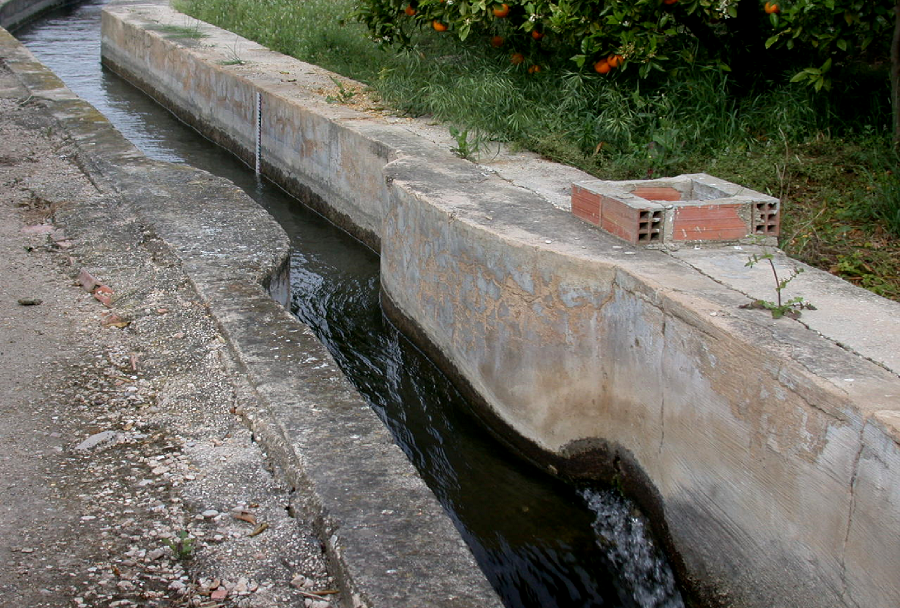
La sénia
The noria is located near the Casa Fosca bifurcation, before the Rebollet Canal. The situation of this noria evidences the impossibility of watering those fields located before or near the first diverted canals, making it necessary to create other systems for obtaining water. In fact, the proliferation in the 20th century of water well pumps altered significantly a good part of the dry lands in our region. So where formerly olive, almond and carob trees abounded, now we can see intensive irrigated lands with orange trees. This element uses animal traction to move a mechanism that lifts water to the surface from the subsoil, through an excavated well.

Els llavadors públics
Washhouses appeared in the second half of the 19th century. In Potries we also find a considerable number of private washhouses bordering the Rebollet Canal, as it traverses the village. An architectural and ethnological ensemble of our urban landscape, very typical and defining the use of water in the last centuries. Until the decade of the 60s in the 20th century, there were in Potries four public washhouses, two of which are still conserved, one in the Corts Valencianas Street and another in the back of the Church. All of them took advantage of the water driven by the Rebollet Canal, with big stone slabs leaning towards the interior of one of the walls, where people could wash their clothes or dishes. Nowadays, Potries conserves two washhouses, one in the Corts Valencianes Street and another behind the Church, both recovered.
El galliponts
The Ferrocarril d’Alcoi (Alcoi Railway) footbridge. This element is located south of Potries, in the Campina allotment, near the facilities of Molí Canyar. This footbridge was built at the end of the 19th century, so that the Alcoi-Gandia Railway company workers and the other people could pass over the Common Canal of Oliva without problems.
Following the disappearance of the railroad, the footbridge over the canal lost its great functionality. It is made of facing bricks, with a small arch and two counterforts. The conservation status is optimal today, without presenting any serious deterioration.

The Camí Reial (Royal Way) footbridge. In front of the main facade of the Molí Canyar, there was a road paved in setts built in the 20s of the last century, during the dictatorship of Primo de Rivera, and in that point there was a footbridge over the canal diverted from the mill. At this point, the canal is below the street level. Until not many years ago, there was a dense reedbed that might be the reason, along with the transfer of the mill to the Aynat family, for its new name as Molí Canyar (Reed Mill).
Àngel Domínguez pottery
The Àngel Domínguez pottery is the last trace of this traditional craft developed in Potries for centuries, an activity that reflects the way our ancestors lived and worked, as well as their cultural legacy. This millennial tradition and way of living ended with the death of Àngel Domínguez in 1983, the last active potter in the town.
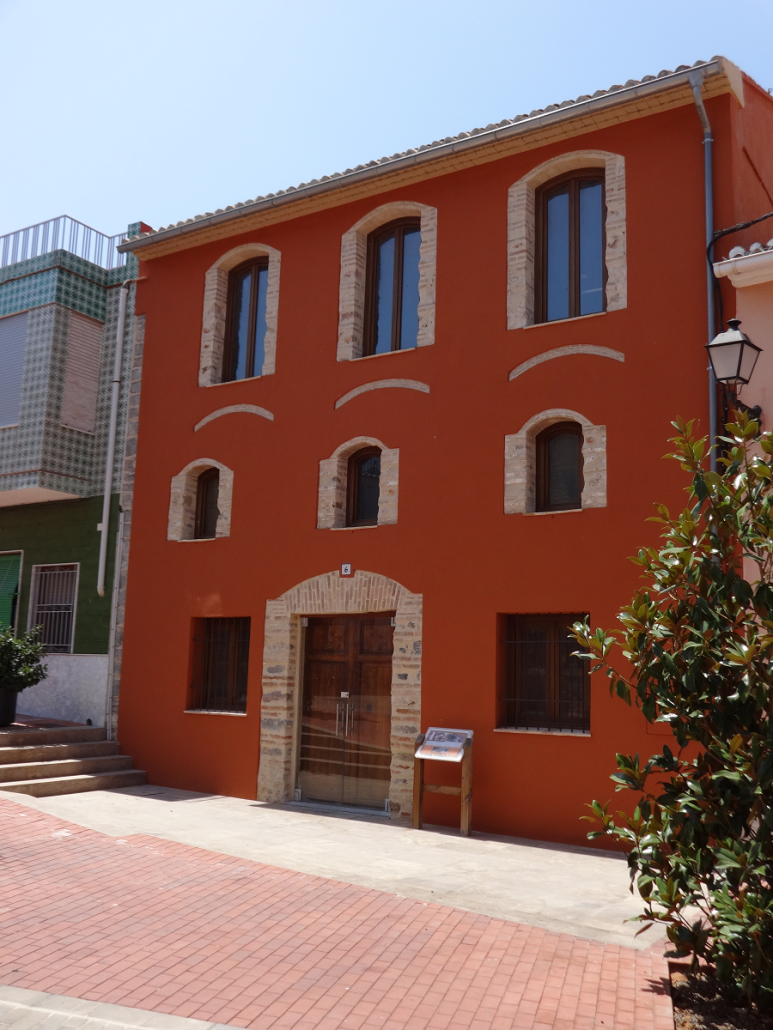 Àngel Domínguez Pottery-Museum Facade.
Àngel Domínguez Pottery-Museum Facade.
It is located in a sector of the town where there were several potteries (up to a total of five documented at the beginning of the 20th century), around the old Terrisseria (Pottery) Street, which marked the outer urban limits, given the contaminating nature of this activity.
The house, built at the end of the 18th century, is a two-storey house with two main bodies and a central courtyard. Under the appearance of a traditional village house, it conceals a pottery workshop and a large kiln.
Its entrance looks alike many typical rural houses of the time, having a central space with rooms on both sides. The bedrooms are in the first bay.
Moving forward, in the second bay we find the core space of the traditional family life, around a table and a fireplace, where oral traditions were passed down from generation to generation.
Moving forward, in the second bay we find the core space of the traditional family life, around a table and a fireplace, where oral traditions were passed down from generation to generation.
 Domestic area, the kitchen-dining-living room.
Domestic area, the kitchen-dining-living room.
It occupies the entire second bay, and still preserves the original elements of the house, such as the fireplace, the kitchen, or the pantry with its shelves. This, together with the original furniture, tools and objects, allowed us to recreate the atmosphere of the most vital place in the house, which had the function of kitchen, dining room and living room.
In the third bay there is the workshop, where we can see a collection of typical devices and tools, such as the bench and the potter’s kick-wheel, the electric wheel’s bench, the electric motor and the transmitters, or the electric varnish mill. On the left side of the bay we also find an entry to a small room called the clay storehouse, where the clay plates decanted in the ponds were stored.
 Craft area. The potter’s kick-wheel.
Craft area. The potter’s kick-wheel.
Further into the house, after the workshop area, there is a court where the decant ponds and the kiln are located. There are two decant ponds, a higher but smaller one where the mud and water were poured, and another lower but wider one where the clay already mixed and filtered was stomped.
 Image of the decant ponds.
Image of the decant ponds.
Next we see the kiln, where the casseroles, pots and other pottery pieces were fired, being a fundamental element in the pottery trade. With a vertical chimney, it is located at the end of the courtyard, and is also called the “morú” (sooty). It is made of solid bricks, with a thick masonry and lime mortar wall on the front, and two clearly differentiated parts, connected by an exterior staircase.
The fire place, at the bottom, is a rectangular space covered with a perforated barrel vault, and a small opening to insert the firewood and light the fire. Over it there is the firing chamber, a smaller, circular space covered with an also perforated vault where the pottery works were placed through an opening.
 Image of the kiln.
Image of the kiln.
The upper floor of the building is a diaphanous room without internal partitions, it is elevated by pillars and blind arches and covered by a very high gable roof. The last potter, Ángel Domínguez, raised the ceiling wanting to create a space where his children could live in the future, but when he realised that they would not continue his craft, he did not carry on with the works. Currently it is used as an exhibition room housing the historical pottery collection of our town.
 Museum exhibition in the upper floor of the house.
Museum exhibition in the upper floor of the house.
Archaeological vestiges
COPPER AGE – BRONZE AGE
Different archaeological vestiges bear witness to the presence of human communities in Potries at least from the Bronze Age. It is very probable that Potries pottery origins go back to the Neolithic, a fact confirmed by the existence of an archaeological site of this time in the “Penyascos” hill and an associated necropolis, located in the plains near of the Serpis River. The first written reference to this site was made by Simeó Peiró Frasquet, a rural physician and amateur archaeologist neighbour of Potries. In the middle of the 20th century, he informed of a first site in the Casa Fosca-Horteta allotment associated to eneolithic funerary rites, that is, a necropolis or cemetery dating from between 2,500 and 1,500 years BC, with burial mounds, human bone remains and lithic material, specially three polished stone axes. In the same site were found several fragments of the same black ceramic object, with an incisive decoration representing geometric motifs, bands and triangles. He also collected a small bracelet made of shells, found in the Casa Fosca next to other smooth ceramic objects.

Given the geographic location, as well as the aforementioned structures and materials, it seems to be a village of the Valencian Bronze Age dating between the third and second millennium BC, which extended from the top of the Penyascos hill, probably reaching the Marta hill. He mentions as well a discovery in the Penyascos hill, which we think is culturally and chronologically related to the necropolis in the plains. It consists of a cabin base found next to a stone wall, with some polished stone maces and other stone tools, and especially two unfired ceramic handmade bowls, along with different remains of ceramics, which were later reassembled into a smooth undecorated container, 40 cm in diameter and 22 cm depth, with two handles on each side, in horizontal and vertical positions, respectively. It continues over the slopes of the hills down to the plain, just before the river bank, a place dedicated, as we have seen, to the burial of the dead. It may be that some members of these first groups settled in our territory would cultivate the natural terraces that extended from the hills to the plain and the river, during the third millennium BC; they surely would hunt, fish or pasture their flocks in the wild surrounding territory; but they would as well take advantage of the good soils and water within their reach, in order to make ceramic objects, which had formed part of their cultural background for a long time. That is why we consider them the first potters in Potries.

“CAMPINA-CATORZENA” ARCHAEOLOGICAL SITE
The Campina-Catorzena site documents the intense romanization of Mediterranean rural areas in the 1st century AD. The excellent geographical conditions, fertile plains and water, along with favorable climatic conditions, made it possible to settle numerous farming villas in La Safor.

Although today it is very devastated, the villa in the Catorzena-Campina had a noble building as the owner’s residence, along with several annexes, such as the servants houses, warehouses, corrals, a winepress and an oilmill; but especially the pottery, of which there are still many remains in the Catorzena allotment.
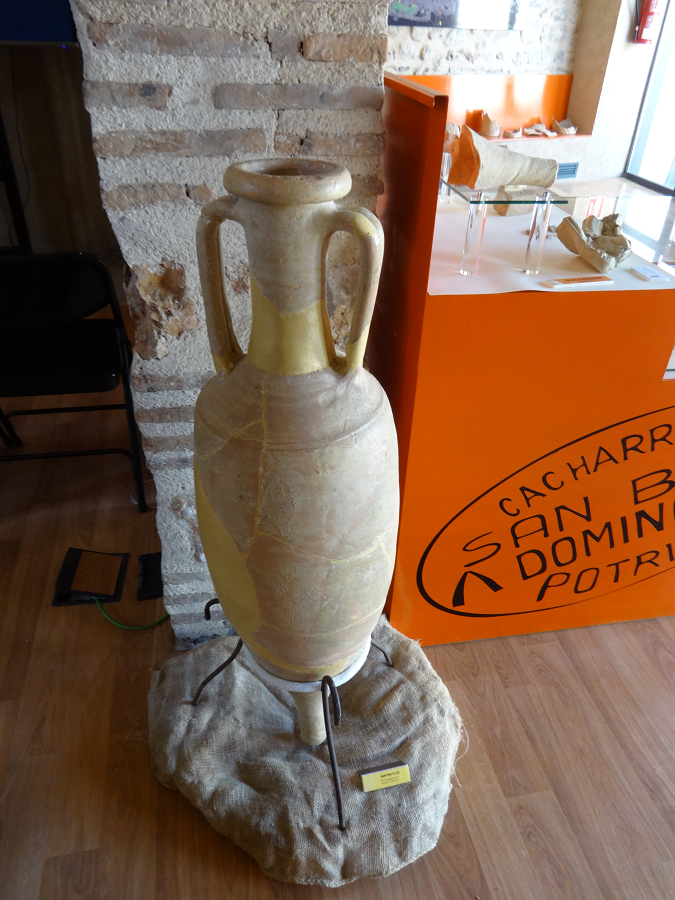
This pottery was located on the river’s right bank, where the terraces have red clay soils, very suitable for their use as raw material. Its most characteristic production were the amphorae, destined for the transport and commercialization of local wine and oil, which were shipped to the peninsula of Italy and Rome. The most frequent ones were wine containers, a product that must have been the basis of the villa’s economy, while oil containers were less frequent, leading us to believe that oil production was less important. In addition, the archaeological register documents the production of several construction materials: tiles, bricks, tubes, etc. as well as a wide sample of common ceramics types. Fragments of imported and luxurious ceramics are also abundant, especially gloss pottery.
ARCHAEOLOGICAL REMAINS IN POTRIES URBAN AREA

In the 15th and 16th centuries Potries was inhabited exclusively by Muslims and it was structured around an urban nucleus of approximately one hundred houses around the current Church Square, bounded on the north by the Rebollet Canal, on the south by the Dalt Street, on the west by Cup Street and on the east by the Abadia Vella and Enguix Streets. Leaving the town center, heading east towards la Font, there was a Muslim cemetery occupying the space of the current Plaça del País Valencià, which extended to the nearby ravine. Beyond the ravine there was the “cantereria” (quarry), an artisan suburban area outside the village.

Discoveries of ceramic dumps in the Avinguda de la Constitució (former Barranc Street) and in Sant Joan Baptista Street bear witness of the pottery production in Potries, too.

All this was corroborated after the urgent excavation carried out in the Sant Salvador Street in the year 2000. The archaeological dig allowed us to document a part of the kiln sector. These rectangular kilns were excavated taking advantage of the unevenness in the clayey soils, which were hardened by the action of fire, and which would surely be aligned along a narrow access alley. They had two superimposed cavities for the fire and the pots, respectively, and one of the kilns appeared totally covered with ceramic tiles. They produced fire and table pottery, glazed clayware, common and painted ceramics, as well as pieces to supply the sugar cane mills in the region. Their types and the techniques employed refer to a consolidated production characteristic of the 16th and 17th centuries. We want to emphasize the high number of large and small sugar forms and jugs produced until the 17th century in Potries, which, along with those of Oliva, constitute a unique pottery production within our region’s context.
















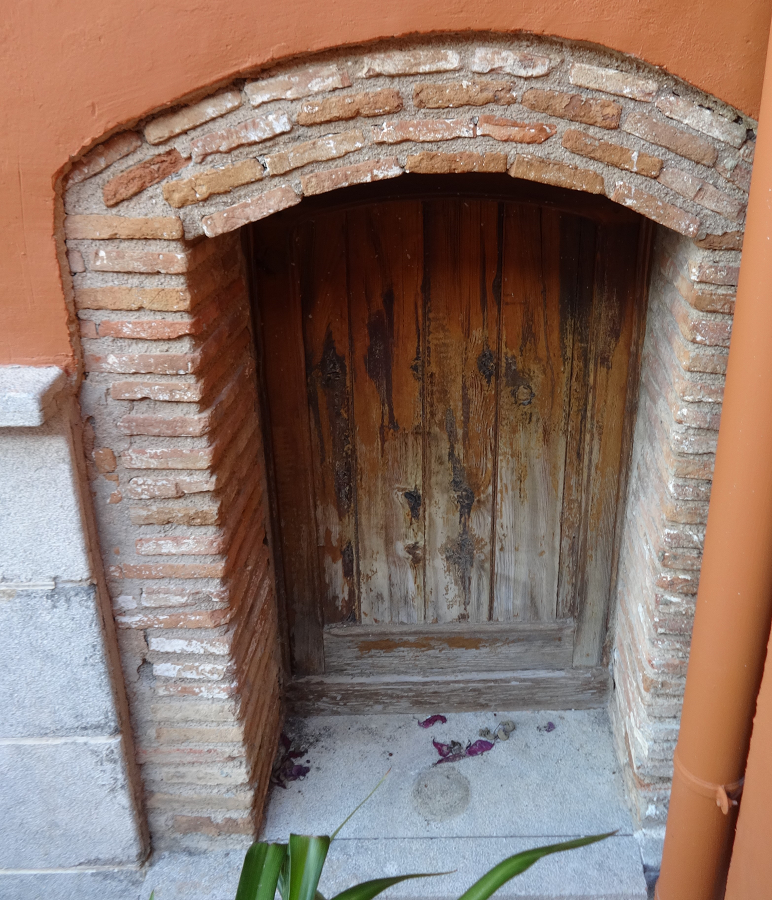


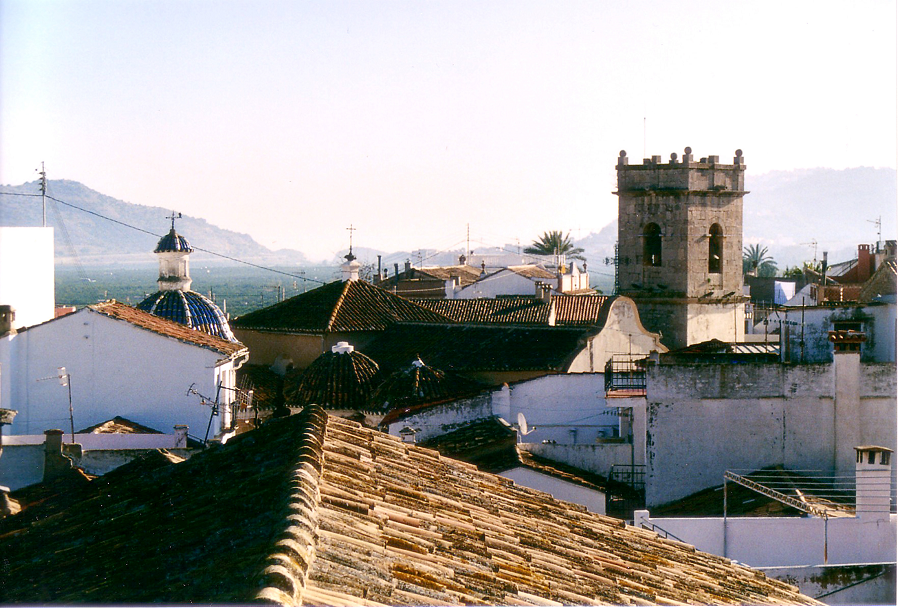







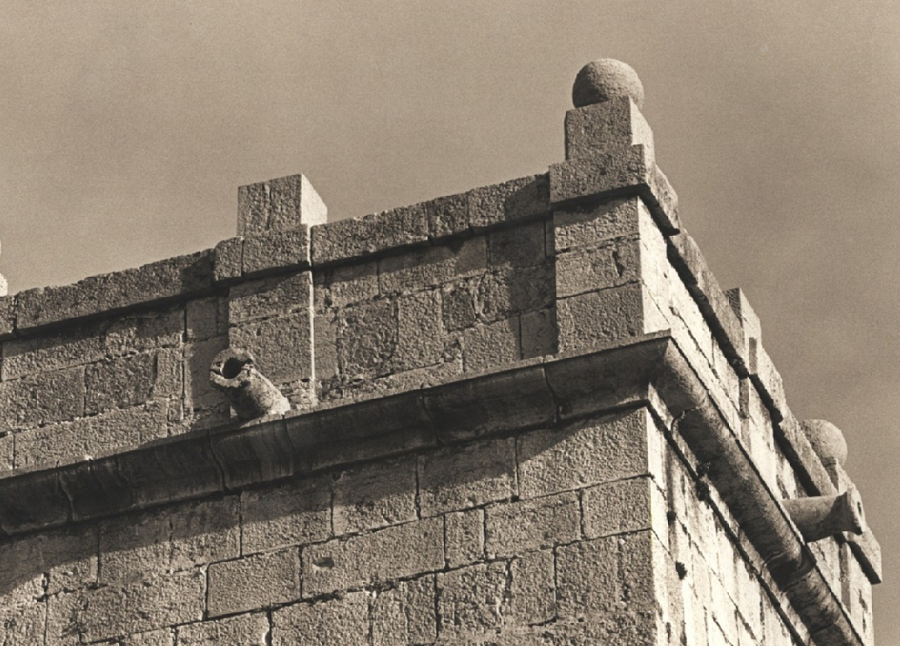


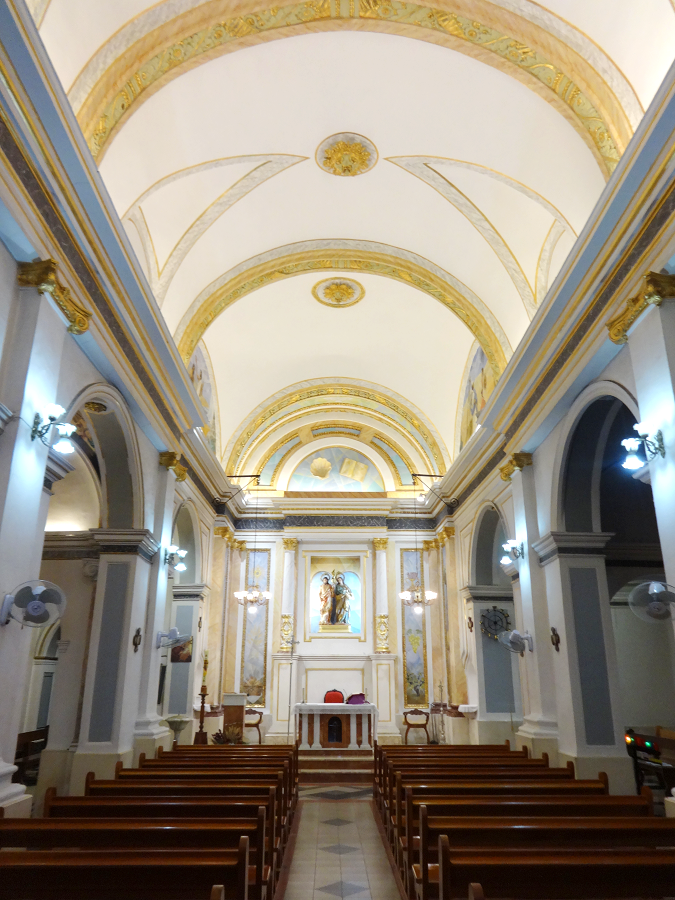


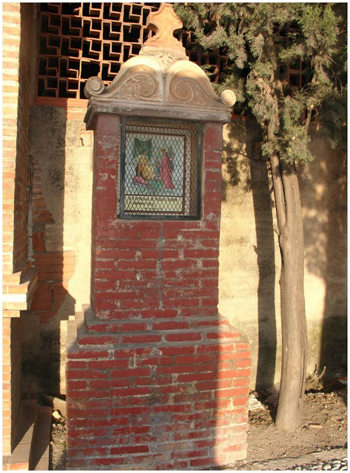



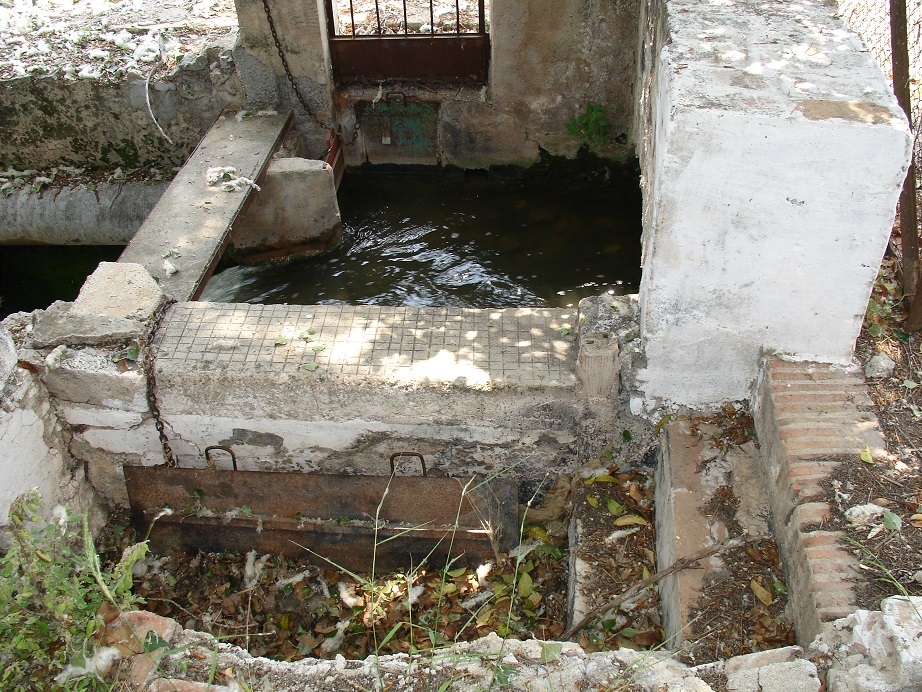








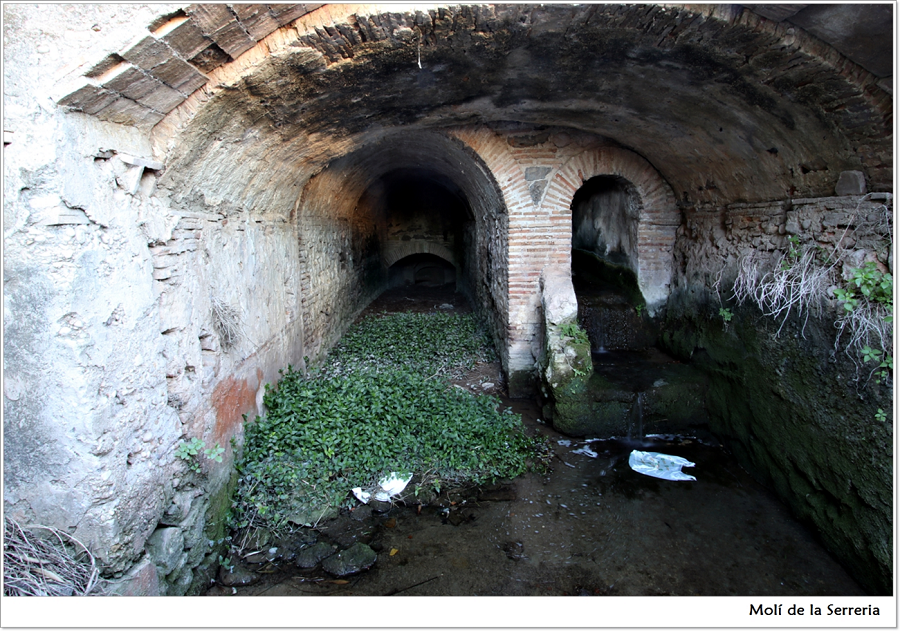











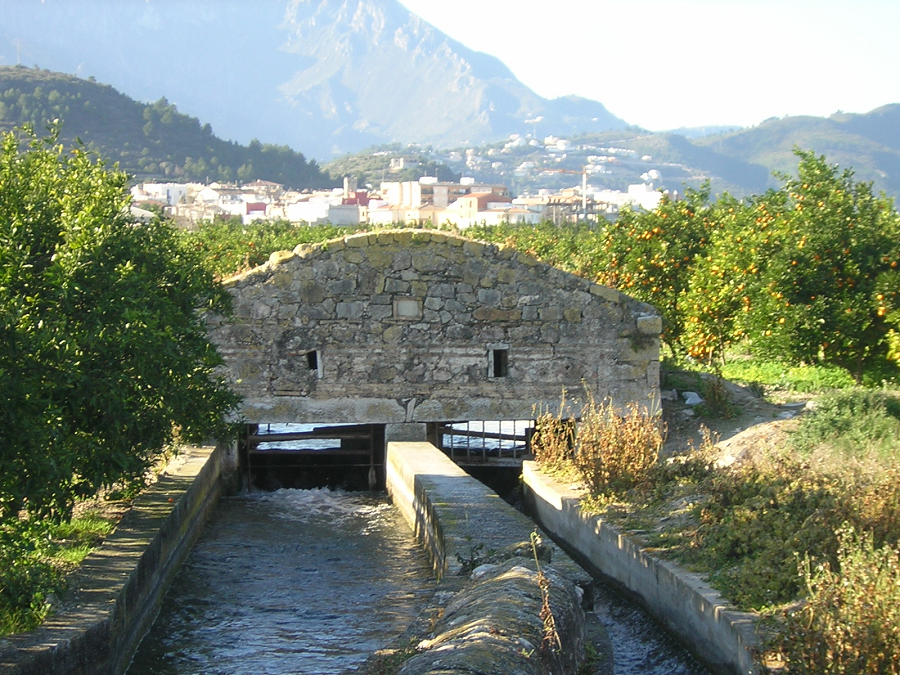














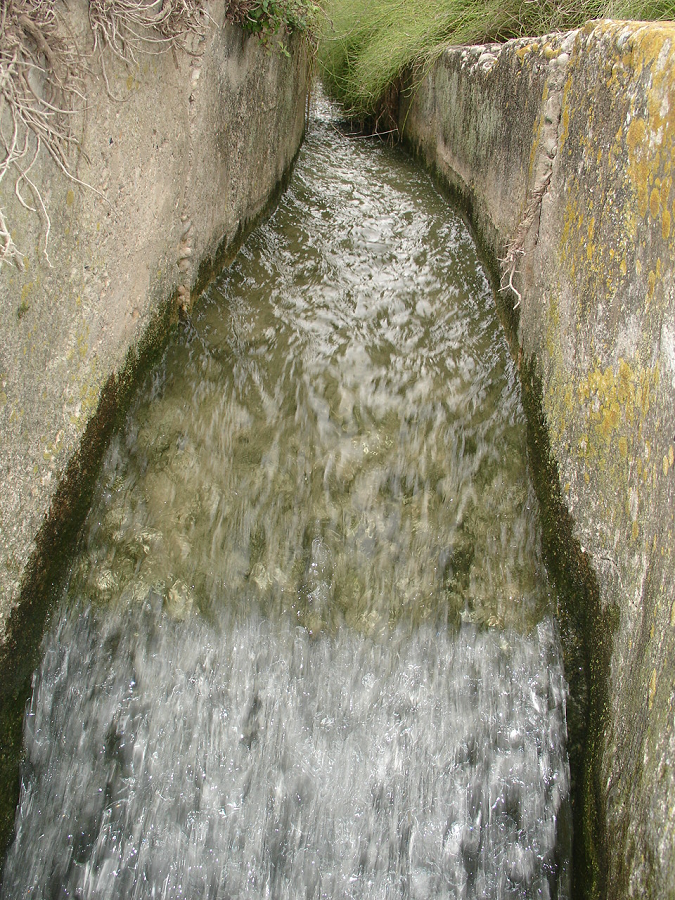




























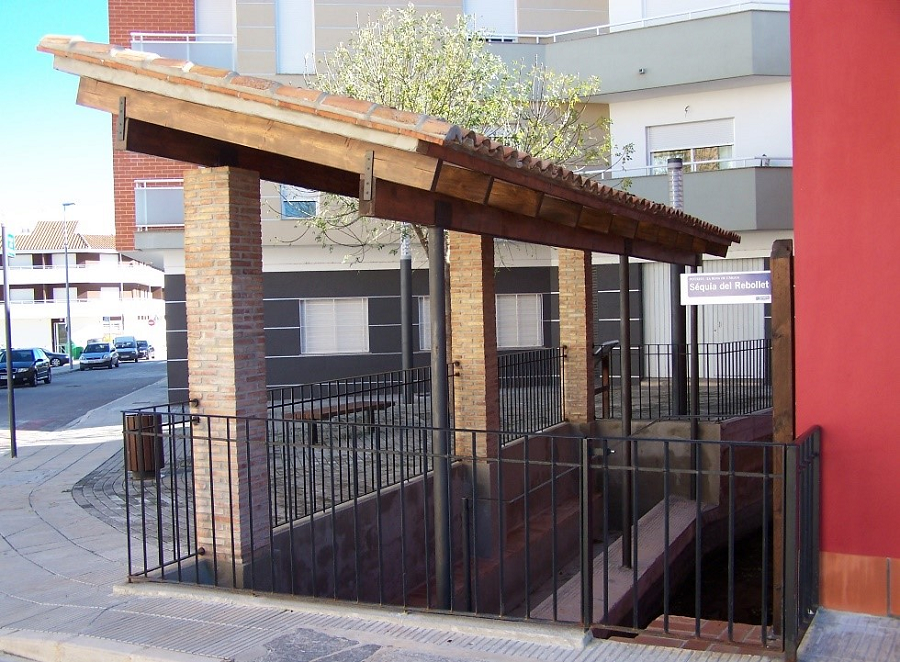
![Foto7687[1]](https://turisme.potries.org/wp-content/uploads/2018/03/Foto76871.png)

















